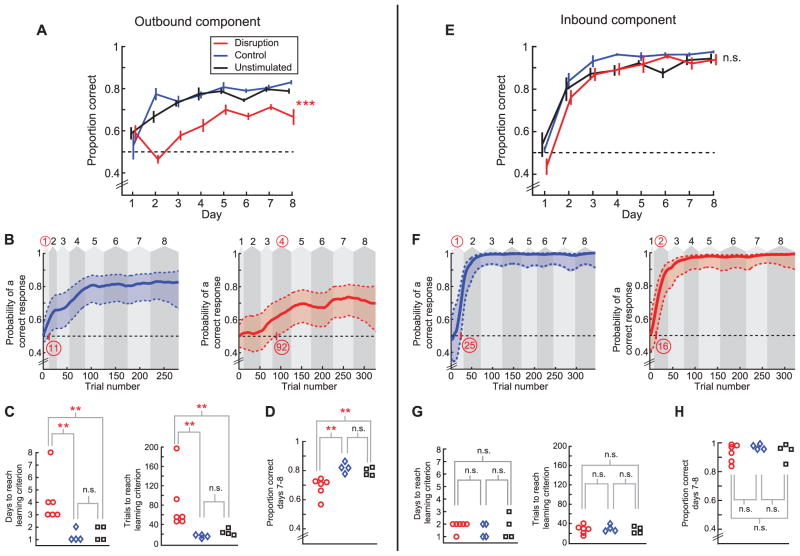Fig. 2.
SWR disruption causes a specific impairment in the outbound, spatial working memory component of the W-track task. (A) Proportion correct versus day number for outbound trials. Horizontal dotted line represents chance-level performance of 0.5. (B) Outbound learning curves with 90% confidence intervals for a control stimulation animal (left) and a SWR disruption animal (right). Background shaded areas denote days (numbers on top). Learning trial and learning day are highlighted in red. (C) Outbound learning day (left) and learning trial (right) for each animal. (D) Average outbound performance on the last 2 days of testing (days 7 and 8). (E to H) Corresponding plots for inbound performance. *P < 0.05, **P < 0.01, ***P < 0.001; error bars represent SEM.

